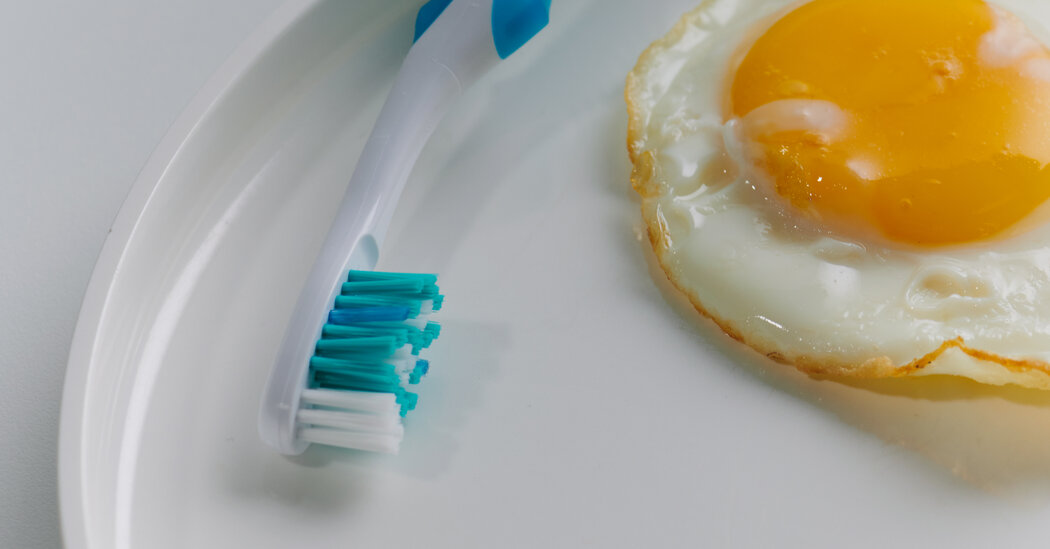
The case for brushing after breakfast
On the other hand, there are arguments for waiting until after breakfast to brush, Dr. Gonzalez-Cabezas said.
“The reality is that most people don’t brush that well,” he said, so even if you brush right before breakfast, you probably will still have bacteria lingering in your mouth that could multiply and produce acids during breakfast and for the rest of the day, so you may as well brush after you eat to minimize that lingering food.
And, he said, the fluoride from your toothpaste will work better throughout the day if it is not displaced by chewing food right after you brush.
Some experts argue that brushing your teeth too soon after a meal — especially one with acidic beverages like coffee or orange juice — will damage your enamel. That is true, Dr. Gonzalez-Cabezas said, but the actual damage that could be done would be so minimal that it wouldn’t really affect the health of your teeth. So to him, the benefits of post-breakfast brushing outweigh the potential negatives.
Dr. de Aguiar Ribeiro recommended that if you can, wait at least 30 minutes after a meal to brush. If you want to get rid of lingering breakfast bits before then, she suggested drinking or swishing water.
Finally, while it’s true that the bacteria present in your mouth right after waking up will feast on your breakfast and produce damaging acids, Dr. Gonzalez-Cabezas said that most people eat breakfast pretty quickly — usually completing their meal within 10 to 15 minutes. That isn’t enough time to do a ton of damage, he said, so again, he believes the benefits of brushing after breakfast — being able to rid your mouth of any food particles and leave fluoride on your teeth — outweigh the negative effects of whatever acids might be produced by bacteria while you are eating.
In his opinion, most people should brush after breakfast, schedule permitting.
The bottom line
Ultimately, the decision boils down to what works for you, Dr. de Aguiar Ribeiro said, because the science is sparse and “there is no consensus in the literature.”




